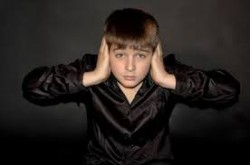

The voice has certain characteristics that make itĭifferent from the voice of the patient. Pattern of auditory hallucinations is often specific. Visual hallucinations occur in 15% subjects, tactile hallucinations inĪround 5% while the commonest of hallucinatory experiences are auditory Incidence of such anomalous experiences being about 50% across all cases 1. Key words: Hallucinations, Schizophrenia.Īcross any sensory modality are seen in schizophrenia with the general More than one third (37%) of those experiencing auditory Hallucinations were the most frequent as is generally reported in Study was an exploratory study in a private care setting. Visual hallucinations were less common (8.59%) followed by the Most common type of hallucinations were of auditory nature (69.23%) andĪmongst that a majority of patients heard voices of an unknown person The data was tabulated and the results presented. Were asked to complete a questionnaire which enquired the hallucinatoryĮxperience. The ptients meeting DSM IV criteria for Schizophrenia Nature and content of hallucinations in 559 patients with schizophrenia Place and duration of study: This study was conducted in a private psychiatric hospital in Mumbai from January 2002 to January 2007. This researchĪimed to study the types and content analysis of various hallucinations However, they stress that future researchers will have to work hard to determine the chain of causality from the brain to behavior-currently, we only have correlational evidence.Are one of the commonest symptoms seen in schizophrenia.

Silverstein and Lai suggest that these various mechanisms might produce disturbances or hallucinations that differ in character: low-level deficits in the eye might only produce visual disturbances, while differences in the default mode network or hippocampus could result in rich and detailed hallucinations. These sensory anomalies could combine with a person’s own fears or ideations, leading to false explanations for the unusual sensations this would explain how the delusions characteristic of schizophrenia come about. Many of these ideas have simultaneously gained support over the years, including (maybe surprisingly), simple degeneration of the neural tissue in the eye. Cellular and network changes in regions like the hippocampus (a memory structure) and the default mode network (a rumination and self-reflection network), can conspire to make remembered or imagined events intrude and replace incoming sensory information. A deficiency of the neurotransmitter acetylcholine in some brain areas leads to “fuzzy” sensory input that is easily misinterpreted-at the same time, an excess of acetylcholine in other areas could cause mental associations and imagery to be experienced as external stimuli.ģ. A “low-level” problem with vision, like degeneration of the retina, prevents people from getting information about the outside world, forcing their brain to fill in the blanks Ģ. There are a number of proposed explanations for visual hallucinations in schizophrenia, but most have to do with a problem in the brain’s sensory processing. Moreover, there is a disagreement about the nature of these hallucinations: whether they are predominantly rich and detailed, involving people and 3D objects well-integrated with the environment, or whether they are more likely to be simple geometric shapes or lights. If clinicians don’t ask specifically about visual hallucinations, they could go under-reported. According to Silverstein and Lai, this could be a result of unstandardized clinical evaluations. Estimates of the prevalence of full-blown visual hallucinations in schizophrenia vary wildly (from 4% to 65%, depending on the study). Distortions of facial features, object size and location, or even temporary partial blindness, are also possible. They range from so-called “low-level” problems, like sensitivity to changes in light levels, all the way to “high-level” problems, like difficulties with face or object recognition.

Visual impairments are well documented in schizophrenia. This week in Frontiers in Psychiatry, Silverstein, and colleagues reviewed the research on visual hallucinations in schizophrenia, emphasizing how they involve multiple brain systems. But visual hallucinations are also possible-and we may have been underestimating their prevalence. Most research on hallucinations has focused on auditory hallucinations (like hearing voices), since these are more common. Sensory disturbances and hallucinations are common occurrences for people with psychotic disorders, including schizophrenia and schizotypal disorders. Post by Anastasia Sares What’s the science?


 0 kommentar(er)
0 kommentar(er)
